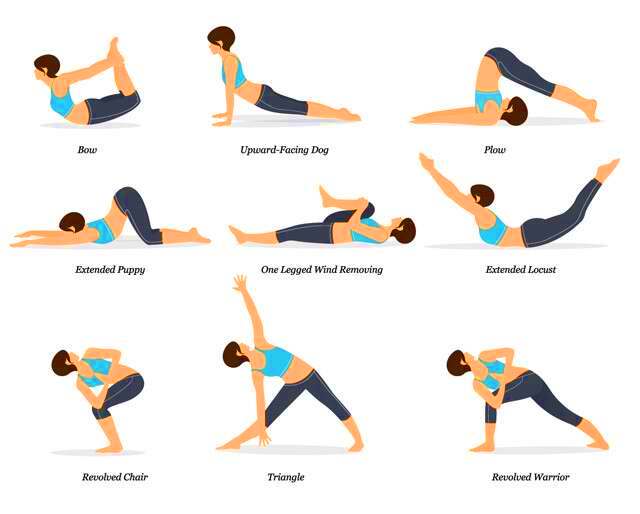Are you looking for relief from uncomfortable constipation? Exercise can be a great way to help move things along. But what type of exercise is best for relieving constipation?
This article will explore the benefits, types of exercise to try, how to exercise safely, and more. Read on to learn how to use exercise to help with constipation.
Benefits of Exercise: Understanding the Positive Impact on Constipation
How often do you exercise to help with constipation?
Exercise can be a great tool for relieving constipation, as it promotes intestinal health and helps to improve muscle tone. Regular exercise has been proven to have many benefits, including improving mental health and stress levels.
Not only that, but it can also help keep your digestive system in top shape. Exercise can stimulate your digestive system, allowing food to move more quickly through your body and increase the number of healthy bacteria in your gut.
It can also help increase the amount of water in your intestines, which can help soften stools and make them easier to pass.
Types of Exercise: Tailoring Workouts for Bowel Health

You can easily find a few exercise types that can help relieve constipation.
Primarily, yoga breathing provides relief through deep, intentional breathing, which helps stimulate the muscles in the digestive system.
Pilates stretching can also be beneficial, as it helps to increase the body’s flexibility and can help open up the abdominal area.
Additionally, aerobic workouts such as jogging, swimming, and cycling are all excellent ways to get the digestive system moving.
Tips for Exercise: Maximizing the Effectiveness
Focusing on proper form and technique is important to get the most out of your exercise routine. When done correctly, exercise can help to relieve constipation.
Cardio benefits like walking, jogging, and cycling can help move digestion along, while weight training can help increase muscle tone, which can help strengthen the abdominal muscles.
Additionally, yoga and other stretching exercises can help to relax the body and promote better digestion. Engaging in consistent, moderate exercise can also help to reduce stress, one of the leading contributors to constipation.
Be sure to listen to your body and adjust your exercise routine accordingly. Staying hydrated and eating a balanced diet will also help maintain regularity.
With these tips, you can enjoy the benefits of exercise and a healthy digestive system.
Precautions: Considering Safety Measures for Exercise

However, it’s important to use caution when exercising to avoid putting too much strain on the body. People with constipation should be careful not to push their bodies too hard when exercising, as this can worsen constipation. It’s important to start slowly and gradually increase intensity over time.
Here are some precautions to keep in mind when exercising for digestive health:
- Monitor muscle strength: Pay attention to how the body feels while exercising, and look for signs of fatigue.
- Take it slow: Start with low-intensity exercises like walking or swimming and progress gradually.
- Drink plenty of fluids: Dehydration can contribute to constipation, so staying hydrated during exercise is important.
- Listen to the body: If pain or discomfort arises, stop immediately and consult a doctor.
Summary: Integrating Exercise into a Natural Constipation Relief Routine
In addition to the precautions mentioned above, exercising regularly can help relieve constipation by promoting healthy digestion. Yoga poses, such as Child’s Pose, Cobra, and Cat/Cow, can help relax the abdominal muscles and stimulate blood flow to the digestive organs. Abdominal massage can be used to break up hard stools and aid digestion.
Additionally, regular exercise can help reduce stress levels, which can help reduce the risk of constipation. Exercise also helps the body regulate digestion hormones, such as insulin and cortisol.
Finally, exercising regularly can help with weight management, which can also help reduce the risk of constipation.
Frequently Asked Questions:
It would be best to do some stretching exercises regularly to reap the benefits of improved digestion and relief from constipation. Stretching can help relax the muscles in your body to improve digestion and reduce your risk of constipation.
Experience the relief of constipation with yoga poses and aerobic activities! Unlock the power of your body’s movements and discover how they can ease discomfort and restore your digestive system. Take the first step towards a healthier you today!
Yes, exercising to relieve constipation could carry risks. Stretching benefits can be beneficial, but exercise intensity must be monitored to avoid straining muscles or exacerbating the condition.
“You hit the nail on the head! Exercise can help treat chronic constipation, especially when staying hydrated and increasing fiber intake. It’s a no-brainer that regular physical activity can help keep your digestive system in tip-top shape!”
Exercising regularly can help with constipation, but the duration and type of exercise that works best depends on your diet. Consider how your diet impacts your digestive health and adjust your exercise accordingly.
Conclusion:
Exercising is a great way to help with constipation. It can help increase your metabolism and stimulate digestion.
An example of this is the case of John, a 50-year-old man who’d been struggling with constipation for years. After adopting a regular exercise routine, he noticed a positive change in his digestive health within a few weeks.
Exercise is an excellent way to help maintain a healthy digestive system, and it can help reduce the symptoms of constipation.

Hello, I’m Ravindra. Over the years, I’ve immersed myself deeply into the world of fitness and health, transforming both my body and mind. Writing has allowed me to share my journey, insights, and expertise with those just starting out and seasoned fitness enthusiasts alike. Beyond just routines and diets, I believe in inspiring others to adopt a holistic approach to well-being.
